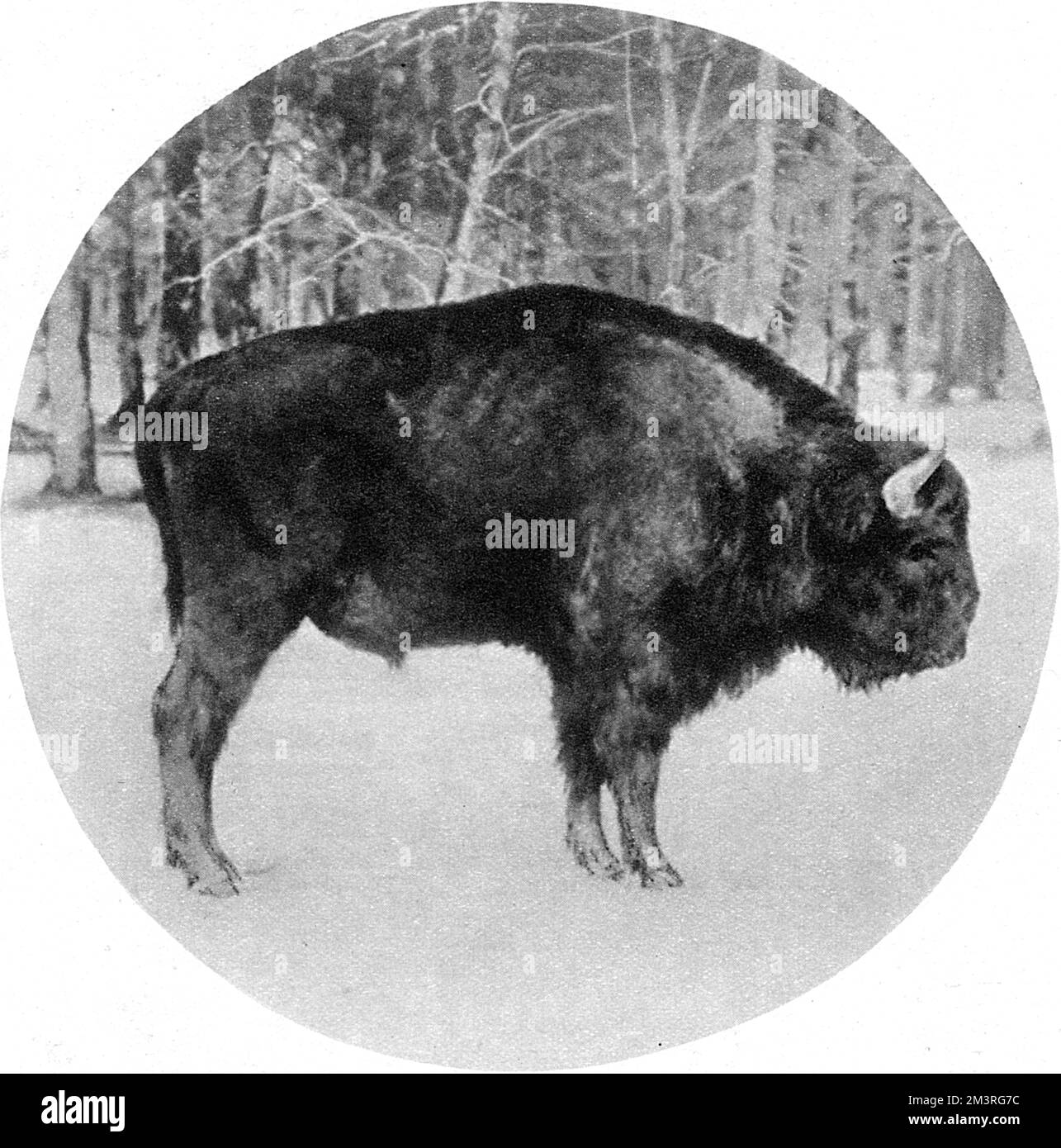One unforeseen casualty of the war were rare European bison, Bos bonasus, also known as Wisent or Zubre. These were hunted to extinction in the wild by Germans occupying Poland, the last bastion of the bison in Europe. Previously under protection of the Tsar, these endangered forest-dwelling creatures were killed by German soldiers for food and for sport during 1915. Standing at over six feet in height at the withers, these prehistoric beasts were larger than their descendants the American bison(also known as buffalo)with longer horns, and a yak-like abundance of hair at the head, neck and for

Image details
Contributor:
Chronicle / Alamy Stock PhotoImage ID:
2M3RG7CFile size:
75.4 MB (2.2 MB Compressed download)Releases:
Model - no | Property - noDo I need a release?Dimensions:
5103 x 5162 px | 43.2 x 43.7 cm | 17 x 17.2 inches | 300dpiDate taken:
11 April 2016Photographer:
ChronicleMore information:
This image could have imperfections as it’s either historical or reportage.
One unforeseen casualty of the war were rare European bison, Bos bonasus, also known as Wisent or Zubre. These were hunted to extinction in the wild by Germans occupying Poland, the last bastion of the bison in Europe. Previously under protection of the Tsar, these endangered forest-dwelling creatures were killed by German soldiers for food and for sport during 1915. Standing at over six feet in height at the withers, these prehistoric beasts were larger than their descendants the American bison(also known as buffalo)with longer horns, and a yak-like abundance of hair at the head, neck and forelimbs. The bison pictured here is a tweleve year old. 1915